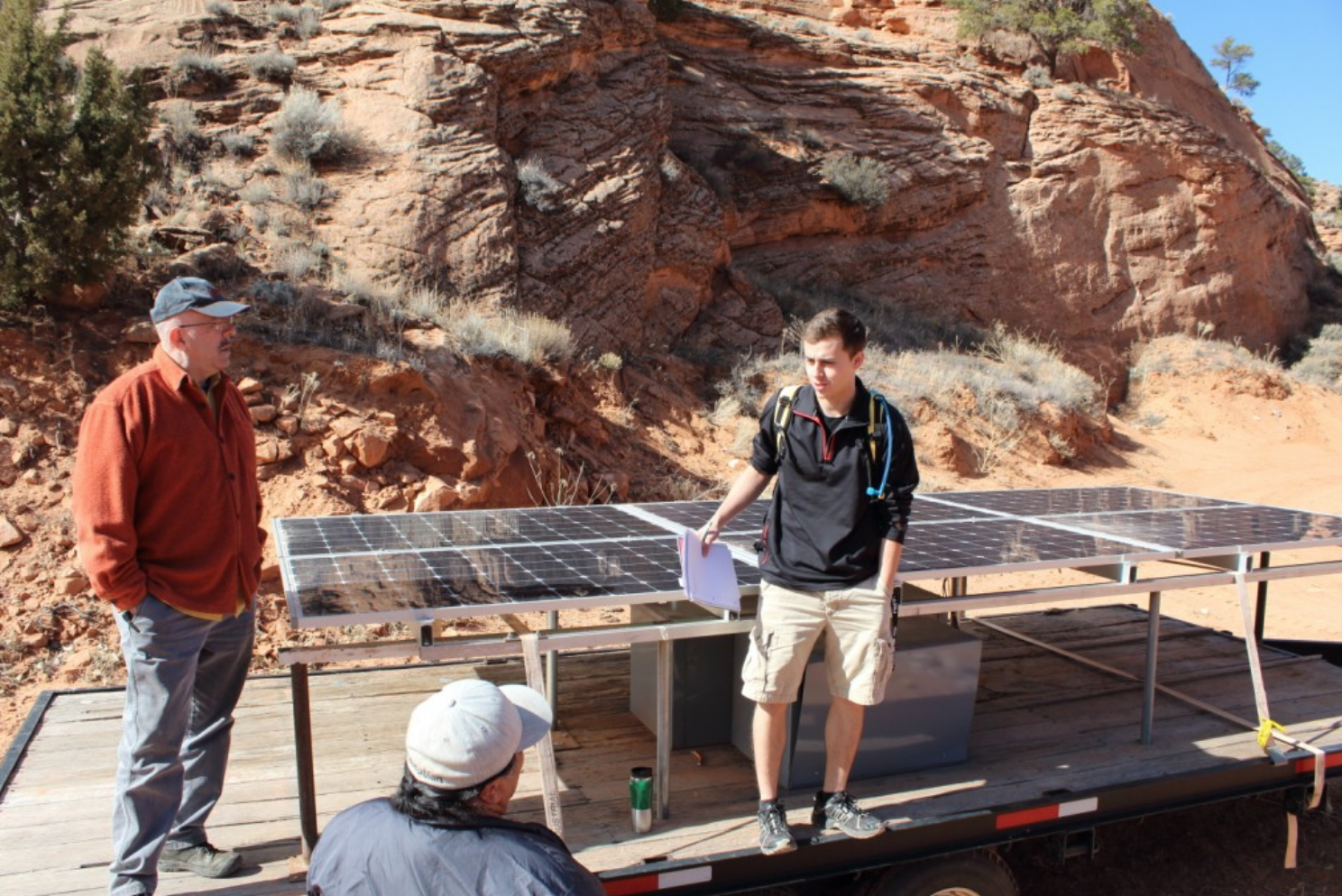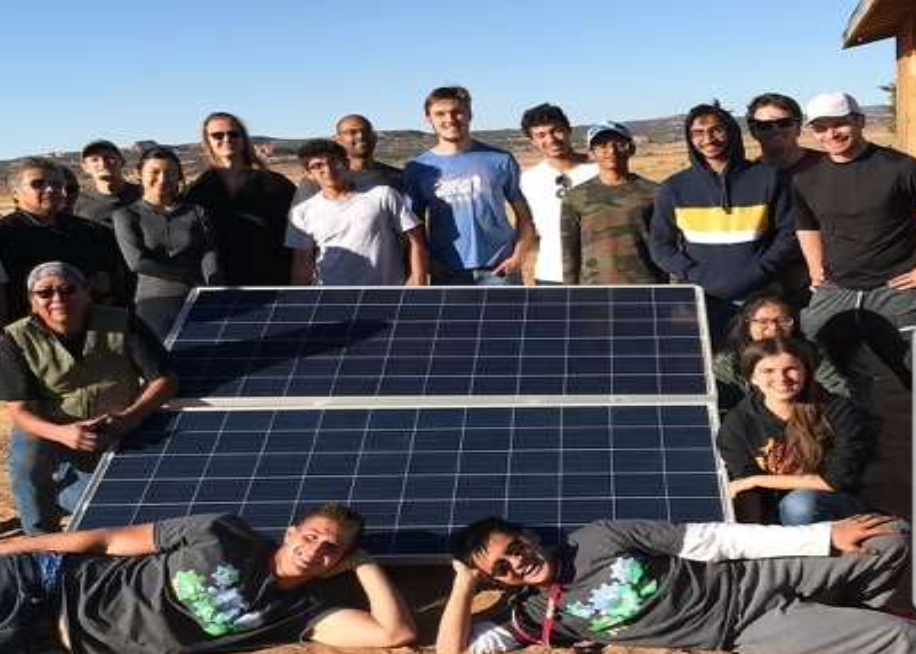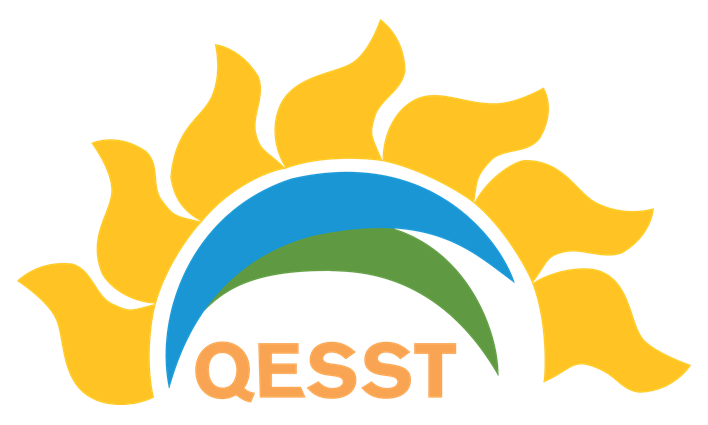QESST-ERC Collaborations Bring Renewable Energy to Native American Communities
Outcome/Accomplishment
Education and Outreach activities completed by the National Science Foundation (NSF)-sponsored Quantum Energy and Sustainable Solar Technologies (QESST) Engineering Research Center (ERC) featured projects completed in partnership with Native American communities to bring renewable energy to remote areas and tribal lands. In partnership with the Student Chapter of Engineers Without Borders (EWB) organization at Arizona State University (ASU), QESST participants collaborated with the Navajo Nation on the Shonto Solar Project. Additional projects were pursued through the University of New Mexico (UNM) in partnership with the Pueblo communities in New Mexico.
Impact/Benefits
Under the Biden Administration's Justice40 Initiative, which seeks a more just energy transition for disadvantaged communities (DACs), prioritized funding streams are being made available to better support the development of clean renewable energy on tribal lands. The Shonto Solar Project at ASU was created to resolve the Navajo Nation's critical needs for electricity on reservation land in Northern Arizona. Due to the community's remote location, they do not have the infrastructure or technology in place to provide all residents with reliable amounts of electricity in their private homes. Some residents lack accommodations such as refrigerators, electric lighting, and temperature control systems. QESST's outreach partnerships with Native American communities like the Shonto address critical energy infrastructure gaps for these communities while providing an opportunity for engineering students to gain real-world PV applications experience while discovering more environmentally equitable and just development practices. The collaborations also provide educational benefits to some residents of tribal communities interested in learning about renewable energy solutions.
Explanation/Background
EWB worked with the Navajo Nation to identify four primary project goals for the Shonto reservation land, including the installation of solar and wind systems to help the tribe find sustainable sources of energy.
ASU's Engineering Projects in Community Service (EPICS) class focuses on the development of engineering solutions that respond directly to community-based needs. Students in the class were invited to participate in the Shonto Solar Project, which included work developing a solar panel system addressing issues such as structure efficiency, fencing, battery storage, support, and insulation. Over the course of nine semesters, the EPICS Shonto Solar team designed, built, and fully installed an operational system in the community. The system featured two +300 watt (W) solar panels wired in parallel and connected to a storage system composed of four 12-volt (V) lead acid batteries. The system enabled homes to meet the goals of powering a chest freezer and 2 additional outlet plug-in appliances. Current work includes improvements to the initial design as well as the construction of three additional systems and a test instance at ASU.
These collaborations demonstrate the breadth and depth of QESST-ERC's education and outreach work. Since its inception, the ERC has introduced over 100,000 students and educators from diverse backgrounds to photovoltaics and renewable energy through its outreach programs. In its 10th year and despite COVID restrictions, the QESST-ERC successfully increased its commitment to education and outreach, reporting the participation of 15,947 K-12 students and support for 225 teachers in one year.
Location
Tempe, Arizonawebsite
Start Year
Energy and Sustainability
Energy, Sustainability, and Infrastructure
Lead Institution
Core Partners
Fact Sheet
Outcome/Accomplishment
Education and Outreach activities completed by the National Science Foundation (NSF)-sponsored Quantum Energy and Sustainable Solar Technologies (QESST) Engineering Research Center (ERC) featured projects completed in partnership with Native American communities to bring renewable energy to remote areas and tribal lands. In partnership with the Student Chapter of Engineers Without Borders (EWB) organization at Arizona State University (ASU), QESST participants collaborated with the Navajo Nation on the Shonto Solar Project. Additional projects were pursued through the University of New Mexico (UNM) in partnership with the Pueblo communities in New Mexico.
Location
Tempe, Arizonawebsite
Start Year
Energy and Sustainability
Energy, Sustainability, and Infrastructure
Lead Institution
Core Partners
Fact Sheet
Impact/benefits
Under the Biden Administration's Justice40 Initiative, which seeks a more just energy transition for disadvantaged communities (DACs), prioritized funding streams are being made available to better support the development of clean renewable energy on tribal lands. The Shonto Solar Project at ASU was created to resolve the Navajo Nation's critical needs for electricity on reservation land in Northern Arizona. Due to the community's remote location, they do not have the infrastructure or technology in place to provide all residents with reliable amounts of electricity in their private homes. Some residents lack accommodations such as refrigerators, electric lighting, and temperature control systems. QESST's outreach partnerships with Native American communities like the Shonto address critical energy infrastructure gaps for these communities while providing an opportunity for engineering students to gain real-world PV applications experience while discovering more environmentally equitable and just development practices. The collaborations also provide educational benefits to some residents of tribal communities interested in learning about renewable energy solutions.
Explanation/Background
EWB worked with the Navajo Nation to identify four primary project goals for the Shonto reservation land, including the installation of solar and wind systems to help the tribe find sustainable sources of energy.
ASU's Engineering Projects in Community Service (EPICS) class focuses on the development of engineering solutions that respond directly to community-based needs. Students in the class were invited to participate in the Shonto Solar Project, which included work developing a solar panel system addressing issues such as structure efficiency, fencing, battery storage, support, and insulation. Over the course of nine semesters, the EPICS Shonto Solar team designed, built, and fully installed an operational system in the community. The system featured two +300 watt (W) solar panels wired in parallel and connected to a storage system composed of four 12-volt (V) lead acid batteries. The system enabled homes to meet the goals of powering a chest freezer and 2 additional outlet plug-in appliances. Current work includes improvements to the initial design as well as the construction of three additional systems and a test instance at ASU.
These collaborations demonstrate the breadth and depth of QESST-ERC's education and outreach work. Since its inception, the ERC has introduced over 100,000 students and educators from diverse backgrounds to photovoltaics and renewable energy through its outreach programs. In its 10th year and despite COVID restrictions, the QESST-ERC successfully increased its commitment to education and outreach, reporting the participation of 15,947 K-12 students and support for 225 teachers in one year.


